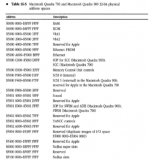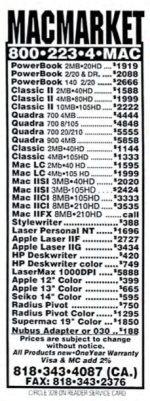Notably, the 700's successors did in fact add that third slot back in.There has to be some reasonable explanation for Apple having pulled a slot out of the Q700/900 and all the Quadras to follow?
Just because there has to be a "reasonable" explanation doesn't mean it has anything whatsoever to do with the OS identifying the onboard Ethernet device (or graphics!) as if it were a NuBus slot. My original point here was to suggest that a two slot Mac doesn't deserve the title of road apple.
Q840, 660AV, and PM6100/7100/8100 have the ethernet device as a CPU connected non-NuBus device
If you look at the block diagram on the Quadra 700, it does too, so I suppose I'm confused as to how this would shape up differently on the two sets of machines. Do the AV/PPC Macs specifically enumerate them differently or is it possible that my original speculation was correct and even the non-AV Quadras do not logically show that Ethernet is a NuBus device (which would make sense to me, because physically, it is not.)
Ultimately though, even if somebody does produce a screenshot of TattleTech or another information tool saying that Ethernet is a NuBus device, it doesn't really prove anything. We know from the block diagrams that even fi the OS presents them as such, these devices aren't actually NuBus slots, and if you look at the diagram JT posted above, we know that there's more than just six possible ID spaces for NuBus "devices" in the memory map, leading back to the point that from a logical addressing standpoint, Ethernet didn't prevent a three-slot Quadra 700.



